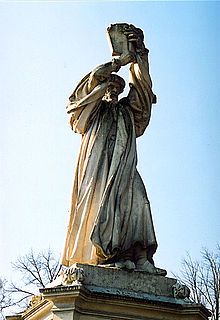William Farel
William Farel | |
|---|---|
Calvinist |
William Farel (1489 – 13 September 1565), Guilhem Farel or Guillaume Farel
Life


Farel was born in 1489 in
This group of humanists also included
Farel was forced to flee to Switzerland because of controversy that was aroused by his writings against the use of images in Christian worship. In 1524, while in Basel, he wrote thirteen theses sharply criticizing Roman doctrine, but his argument was so heated that even Erasmus joined in the demand for his expulsion. He went on to Strasbourg and later Montbéliard, but was again forced to leave.[1] Eventually he spent time at Zürich with Huldrych Zwingli and back at Strasbourg, with Martin Bucer. Finally given license to preach anywhere in the Canton of Bern, he convinced Neuchâtel to join the Reform in 1530.[10]
Farel established himself in Geneva in 1532, where he remained as minister, drawing Calvin to the city, but breaking with him over the Eucharist. Resistance from the established authority led to a brief period of banishment but the Bern government again granted him liberty of worship and he was able to return to preaching.[1] However, the struggle was not over and Farel, along with Calvin, was banished from Geneva in 1538, in part for his rigorous positions, and retired to Neuchâtel. There he spent the rest of his life, and was frequently consulted by Calvin.[1]
In 1558, when he was sixty-nine, Farel married Marie Thorel, who was a teenager. Scott Manetsch notes that Calvin was "flabbergasted and irate" at the marriage, "fearing that his friend's scandalous action would inflict irreparable damage on the cause of the Reformation throughout Europe."[11] The couple did have a son six years later, although he died in infancy.[1] In his final year, after Calvin's death, Farel visited Metz and preached with all his old fire, but the effort seemed to have exhausted him and he died while still in Metz. A monument to him was unveiled at Neuchâtel on 4 May 1876.[1]
References
- ^ a b c d e f g Gordon 1911, p. 176.
- ^ González 1984, p. 65
- ^ Latourette & Winter 1975, p. 758
- ^ Latourette & Winter 1975, p. 751
- ^ Latourette & Winter 1975, p. 891
- ^ "Guillaume Farel". Encyclopædia Britannica. Retrieved January 14, 2016.
- ^ Latourette & Winter 1975, p. 750
- ^ MacVicar 1955, p. 175
- ^ Marshall 2007
- ^ González 1984, p. 68
- ^ Manetsch, Scott M. (2013). Calvin's Company of Pastors: Pastoral Care and the Emerging Reformed Church, 1536-1609. Oxford University Press. p. 102.
Sources
- ISBN 978-1-56563-522-7
- Gordon, Alexander (1911). . In Chisholm, Hugh (ed.). Encyclopædia Britannica. Vol. 10 (11th ed.). Cambridge University Press. p. 176.
- ISBN 978-1-56563-329-2
- MacVicar, Donald (June 1955), "William Farel, Reformer of the Swiss Romand, His Life, His Writings and His Theology", Church History, 24 (2), Cambridge University Press: 175, JSTOR 3161653
- Marshall, Peter (2007), "Leaving the World", in Matheson, Peter (ed.), Reformation Christianity, Fortress Press, ISBN 978-0-8006-3415-5
Archive Sources
Autograph, manuscript letters of William Farel sent to other reformers and received by him, are preserved in the "Archives de l'État de Neuchâtel".
- PAST, Fonds: Archives de la société des pasteurs et ministres neuchâtelois (13e-20e). Archives de l'État de Neuchâtel.
